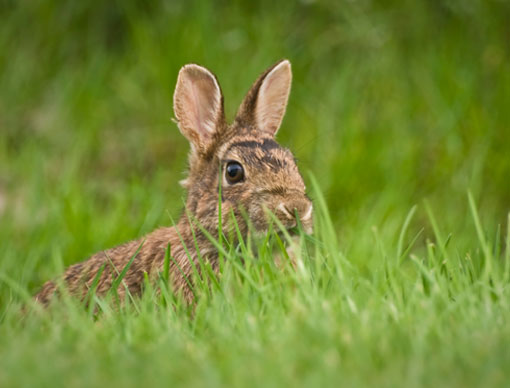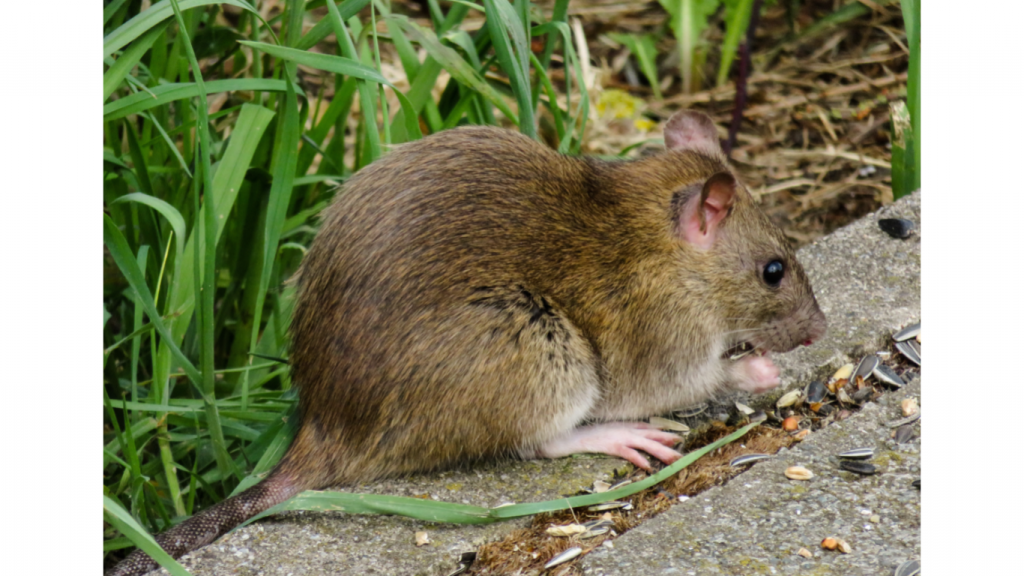Rabbit Pests

General information
In the wild, rabbits have plenty to keep them occupied, from foraging to reproduction to territorial defence. With the pet rabbit common in homes throughout the UK, it is difficult to understand the devastation that wild rabbits running rampant across both rural and industrial land can cause. Due to rabbits being somewhat humanised in books, cartoons and films people rarely think of these cute, furry friends as being a problem, however, rabbits are considered to be a pest under the Pests Act 1954 and using legal and lawful methods to control and eradicate them can take place all year round. In the wild, rabbits live in warrens comprising an intricate series of underground tunnels or burrows with multiple entrances. Their whiskers are the same width as their body and are used to determine whether they will fit through a hole, which stops them from getting stuck in tunnels. Rabbits are sociable animals that live with other individuals and are hierarchical, so one female rabbit is dominant; males will also form a hierarchy.
The dominant rabbit enjoys many benefits; they get the best burrows, first dibs on food and can request grooming from other rabbits. Rabbits are prey animals and when out of the burrow they are constantly on the lookout for predators, such as foxes and birds of prey. Once danger is detected, rabbits can signal to others by thumping their hind legs, before seeking the shelter of the burrow. Whilst their vision is good, their sense of smell is better and they will likely be able to smell a predator before they see them. In rural settings, the rabbit in small numbers is considered essential to local habitat, therefore maintaining their population below a certain level is important. In the UK, rabbits are considered an acute pest, with their numbers spiraling out of control. They dig, chew, eat and breed at such a rate that no parcel of land will be left untouched. The main predators of rabbits are the stoat and the fox, although young rabbits also fall to birds of prey and weasels. The disease myxomatosis was introduced in the 1950s to curb the population and the rabbit almost became extinct. The rabbit pre-breeding season population is estimated to be 40 million.
Rabbits are prey animals. When out of the burrow, they are constantly on the lookout for predators, such as foxes. Once danger is detected, rabbits can signal to others by thumping their hind legs, before seeking the shelter of the burrow. Whilst their vision is good, their sense of smell is better, and they will likely be able to smell a predator before they see them. In rural settings, the rabbit in small numbers is considered essential to local habitat, therefore maintaining their population below a certain level in important. In the UK, rabbits are considered an acute pests, with their numbers spiralling out of control. They dig, chew, eat and breed at such a rate that no parcel of land will be left untouched The main predators of rabbits are the stoat and the fox, although young rabbits also fall to birds of prey and weasels The disease myxomatosis was introduced in the 1950s to curb the population and the rabbit almost became extinct. The rabbit pre-breeding season population is estimated to be 40 million.
Average Lifecycle
Rabbits generally are able to breed at a young age and many regularly produce litters of up to 7 young, often doing so 4 or 5 times a year.Rabbit’s gestation period is only 28 to 31 days. Newly born rabbits are naked, blind and helpless at birth. Mothers are remarkably inattentive to their young and are almost absentee parents, commonly nursing their young only once per day and for just a few minutes. To overcome this lack of attention, the milk of rabbits is highly nutritious and among the richest of all mammals. The young grow rapidly and most are weaned in about a month. Males (bucks) do not assist in rearing the kittens with the mother rabbit able to become pregnant again 4 days after the birth of her kittens.
Quick Facts
Type: Mammal
Diet: Herbivore
Lifespan: 1–9 years (wild); 7–10 years (captive)
Size: 8–20 in
Weight: 0.8 and 4.4 lb
Habitat: Meadows, woodland, forests, grasslands, deserts and wetlands
Range: North America, Europe, Southeast Asia, Africa and South America
Scientific name: Oryctolagus cuniculus
FUN FACTS
•Rabbits were brought to Britain by the Romans about 2,000 years ago.
•Rabbit remains were found in an archaeological dig near Thetford, Norfolk in 2005. However, almost certainly the population died out when the Romans left.
•When rabbits are happy they may jump in the air turning and twisting their bodies, a behaviour known as a binky.
•They have nearly 360° panoramic vision, allowing them to detect predators from all directions; they can see everything behind them and only have a small blind-spot in front of their nose.
TREATMENT
Working closely together with you the client, as well as following our instructions we will rid you of these pests
Give us a call: 0208 914 8285







